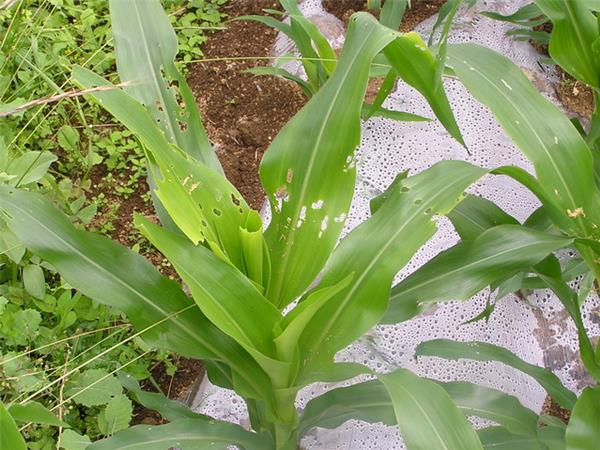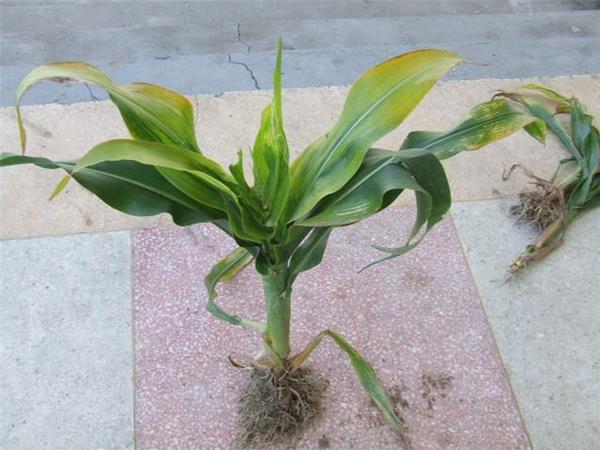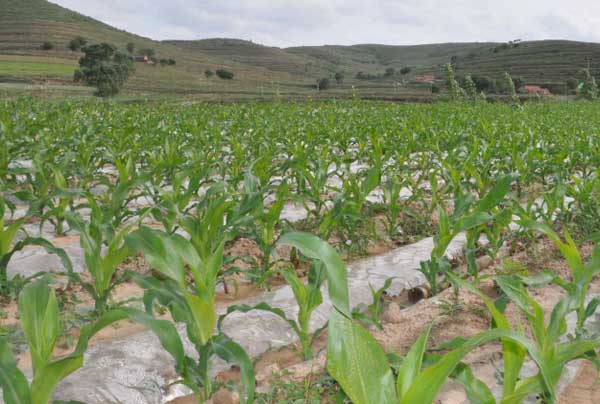Common corn insect pests and diseases
Before learning how to control corn diseases and insect pests, we must first have a more comprehensive understanding of all kinds of diseases and insect pests that may be infected by corn, so as to prescribe the right medicine to the case.

Species of common pests in corn
1. Corn borer: corn borer can cause corn mosaic, drill stem, harm female ear and male ear. The control of corn borer should be controlled at the end of heart and leaf, using the method of "three fingers and one pinch" and losing heart with 1.5% phoxim granules at the dosage of 1.5 kg per mu, the control effect is obvious. You can also use 1000 times of pyrethroid pesticides mixed with water or 1000 times of phoxim emulsion to remove the spray head of the sprayer and spray the solution into the heart leaves.
two。 Armyworm: armyworm, commonly known as colorful worm, wheat silkworm, belongs to the family Lepidoptera Noctuidae. It is the main pest of food crops and forage crops, which is harmful to corn seriously. Armyworm is a polyphagous, migratory and fulminant pest. The occurrence of armyworm is closely related to temperature and humidity. In general, the optimum temperature for adults to lay eggs is 19-25 ℃, and the oviposition of more than 30 ℃ is affected. In addition, the higher the humidity, the more conducive to adult oviposition, especially in the cloudy and sunny climate, rainy and humid climate, not only conducive to adult oviposition, but also conducive to egg hatching and larval survival and development.

3. Cotton bollworm: belonging to Lepidoptera, Noctuidae. Alias drillworm, green worm, cotton boll armyworm and so on.
4. Corn aphids: for aphids, male drawing and cutting can reduce their harm to a certain extent, and can also be sprayed with 1000 dimethoate EC or 10% imidacloprid.
5. Corn leaf mite: commonly known as red spider, it can harm many kinds of crops. Adult mites and nymph mites suck the sap from the back of the host leaves, and the injured leaves turn from yellow to white and die, affecting the filling process of corn, resulting in a decrease in 1000-grain weight and a reduction in yield. The plants were carefully sprayed with 3000 times of avermectin to control corn leaf mites.

Common diseases of maize
Dry rot: corn can be killed during the growing period, especially in the later growth period. Damage to stems and ears. There are brown, dark brown and purplish red disease spots on the base of the stem and ear, and when the stem is serious, the stem is broken from the diseased part. The ear axis of the diseased ear becomes loose and easy to break, the lower grains of the diseased ear become brown and dull, there are often white mycelia between the grains, and the diseased ear adheres to the bracts and is not easy to peel off. Control methods: (1) breeding and selecting disease-resistant varieties. The rotation was carried out for 2-3 years, and the soil was turned deep in autumn to remove the diseased and residual tissue in the field and reduce the source of infection. Strengthen cultivation management, sow seeds at the right time, increase the application of organic fertilizer, cultivate strong seedlings and improve disease resistance. (2) soak the seeds with 1000 times of carbendazim wettable powder for 24 hours before sowing. After soaking the seeds, rinse with clean water and sow the seeds. At heading stage, 50% carbendazim wettable powder or 50% methyl topiramate wettable powder was sprayed 1000 times. Focus on spraying the ear and lower stems and leaves, and spray again every 7 days.
Rough dwarf disease: mostly appeared in 5-6 leaves of corn, the leaves of the diseased plants were dark green, the leaves were wide, short, hard, brittle, and dense and clustered, and the plant grew slowly and dwarfed, which was caused by the disease transmitted by the infected gray planthopper. Grey planthopper generally lives in places with many weeds, so when wheat is sprayed three times, weeds on the ridge of the field, the ground and the roadside should be sprayed together to kill the insect source. You can also use 1.5% of 1605 powder 3-3.5kg, plus 10-15kg of soil, before the emergence of corn seedlings, sprinkled into the corn line, found that diseased plants should be pulled out in time to reduce the source of infection.

As a food crop and cash crop, the value of corn is very high, and the taste of corn after maturity is very delicious, so be sure to control the diseases and insect pests of corn, lest they destroy it all at once.
Related
- Wuhan Hospital Iron Tree Blooming Result Was Instantly Frightened by the Gardener Master
- Which variety of camellia is the most fragrant and best? Which one do you like best?
- What is the small blue coat, the breeding methods and matters needing attention of the succulent plant
- Dormancy time and maintenance management of succulent plants during dormancy
- Minas succulent how to raise, Minas succulent plant pictures
- What are the varieties of winter succulent plants
- How to raise succulent plants in twelve rolls? let's take a look at some experience of breeding twelve rolls.
- Attention should be paid to water control for succulent plants during dormant period (winter and summer)
- Watering experience of twelve rolls of succulent plants
- Techniques for fertilizing succulent plants. An article will let you know how to fertilize succulent plants.



